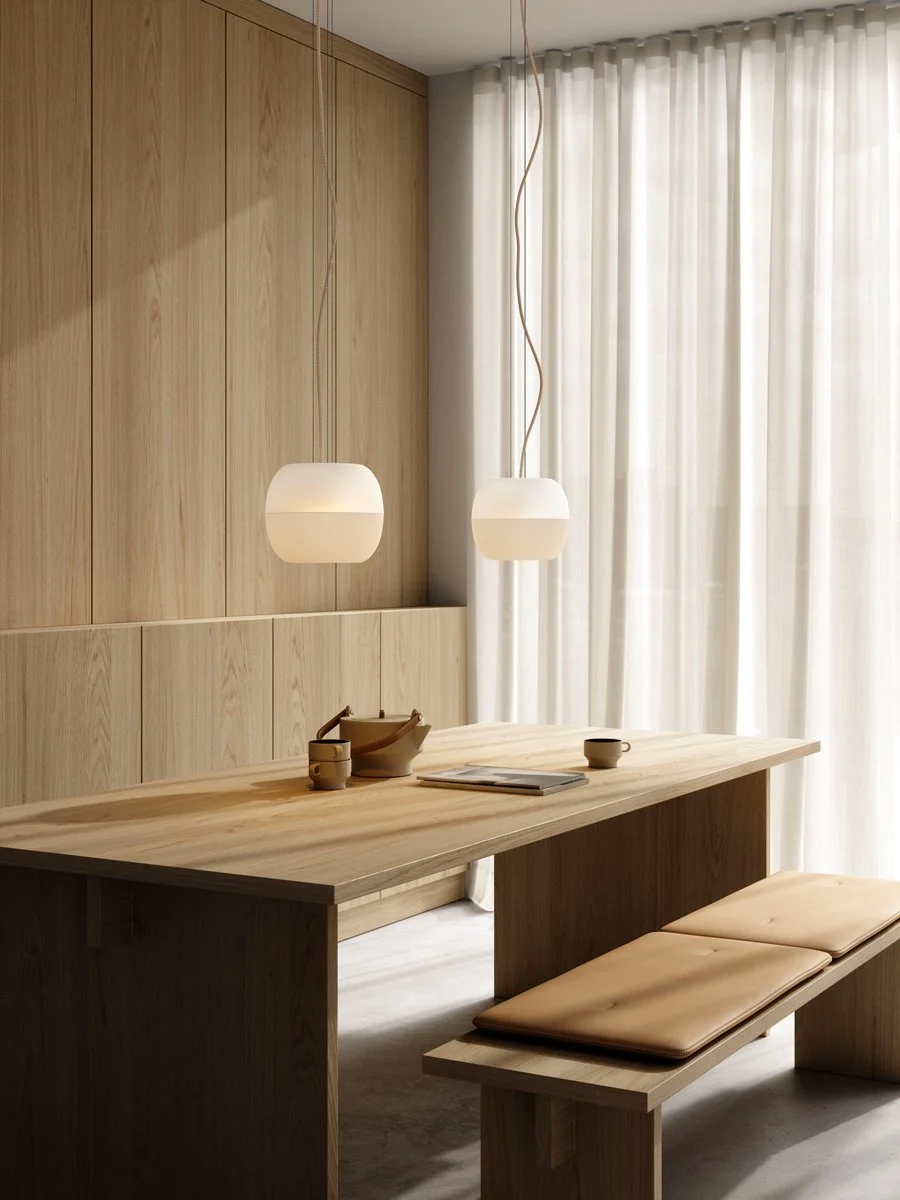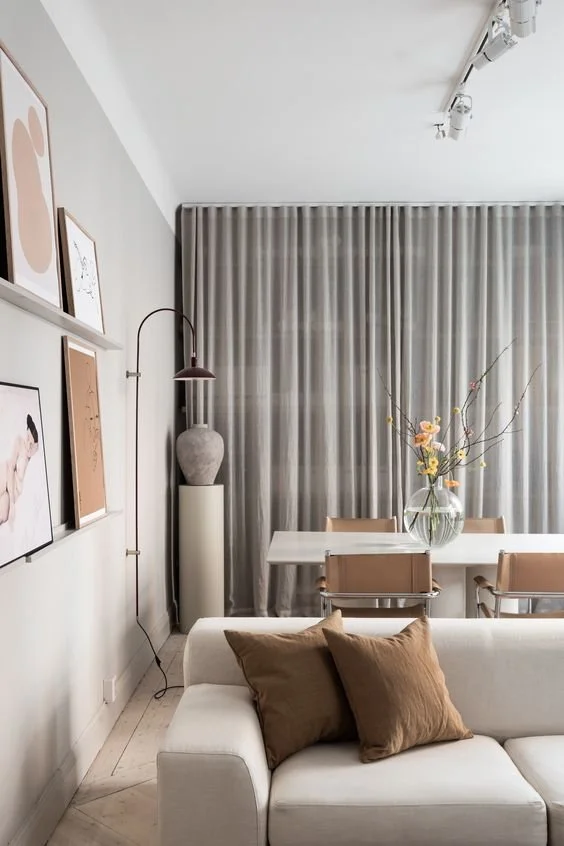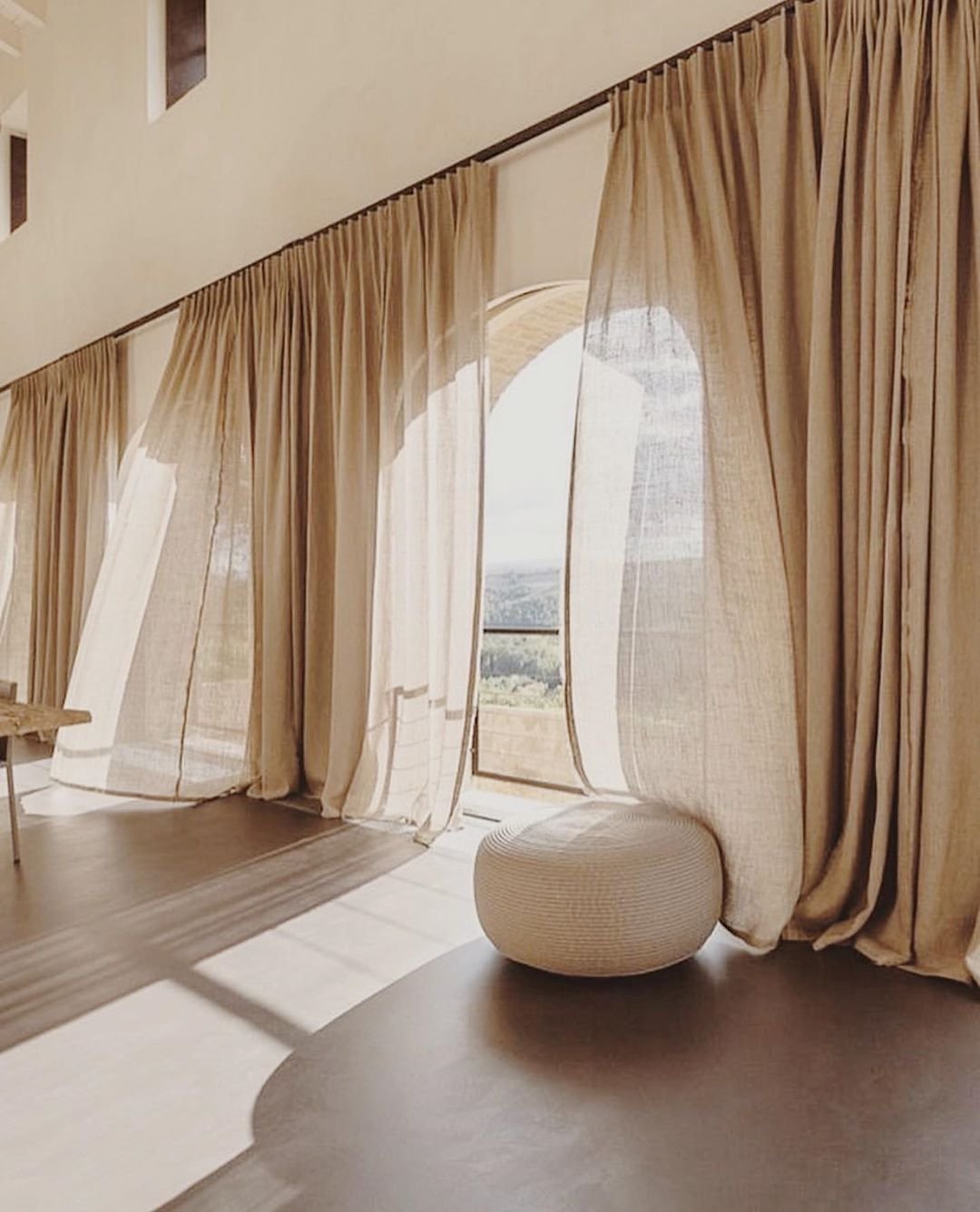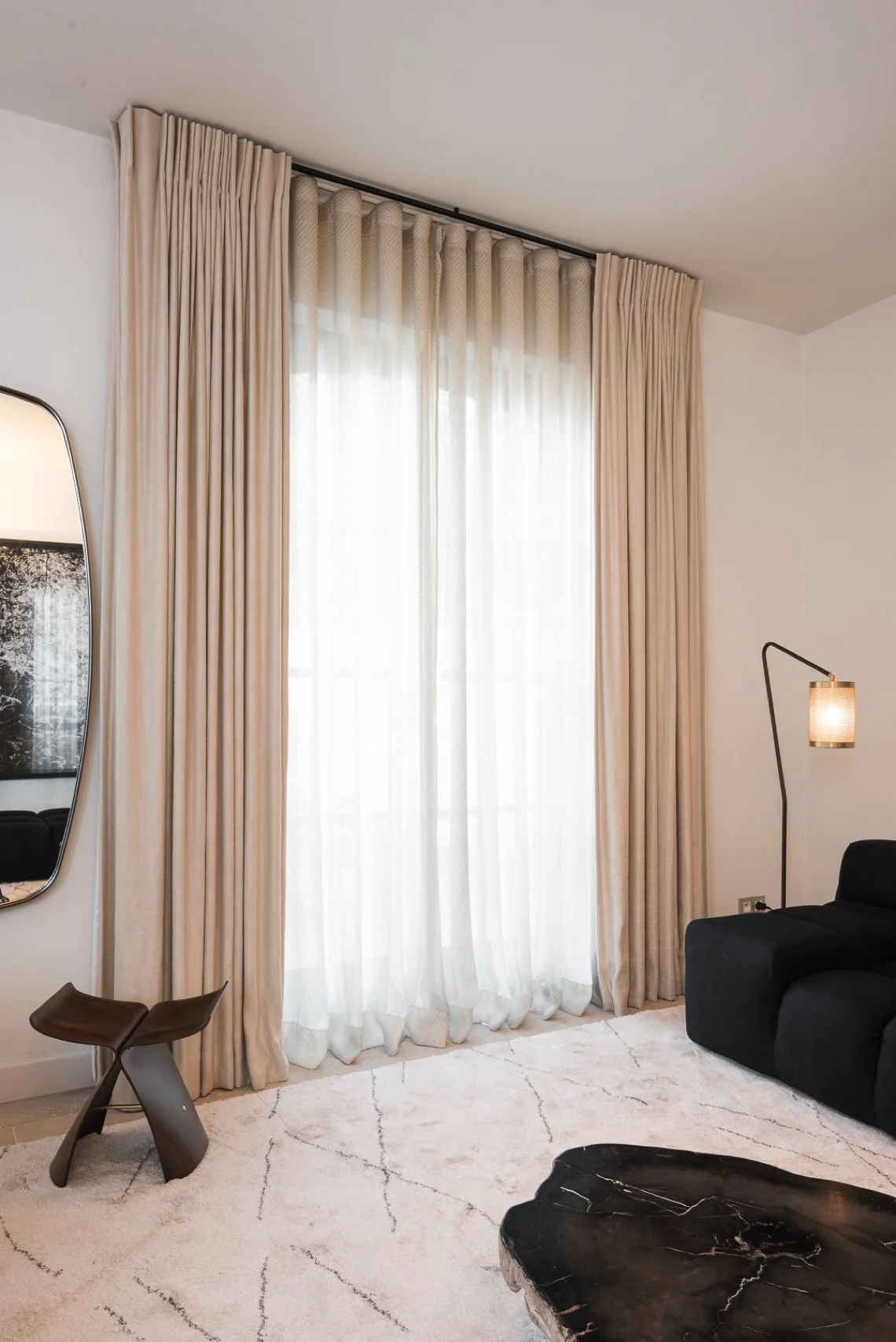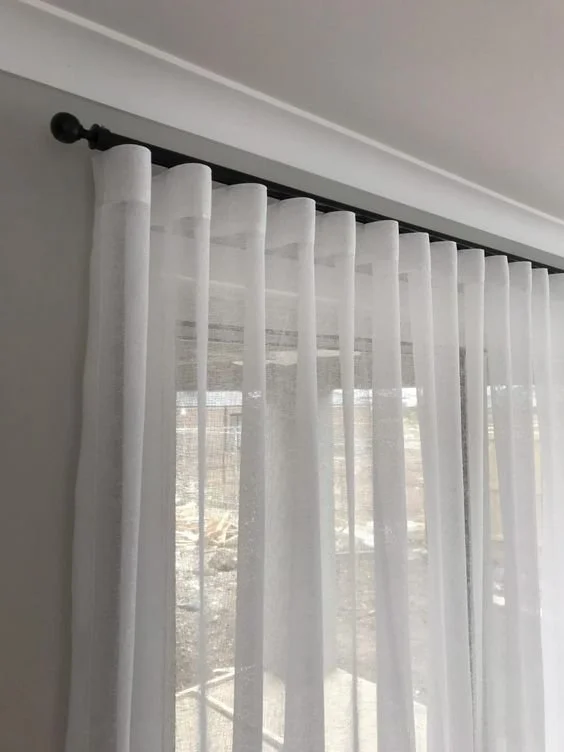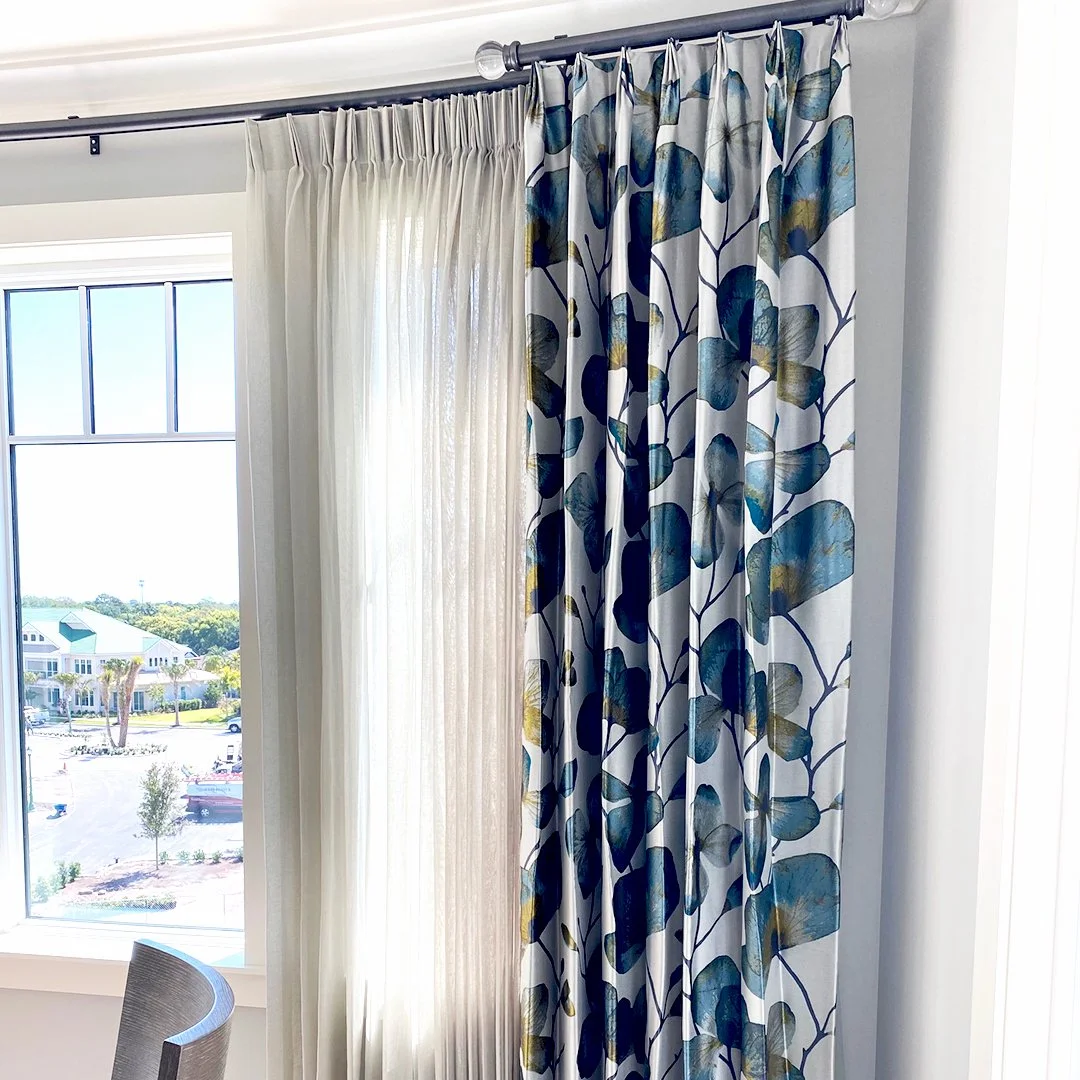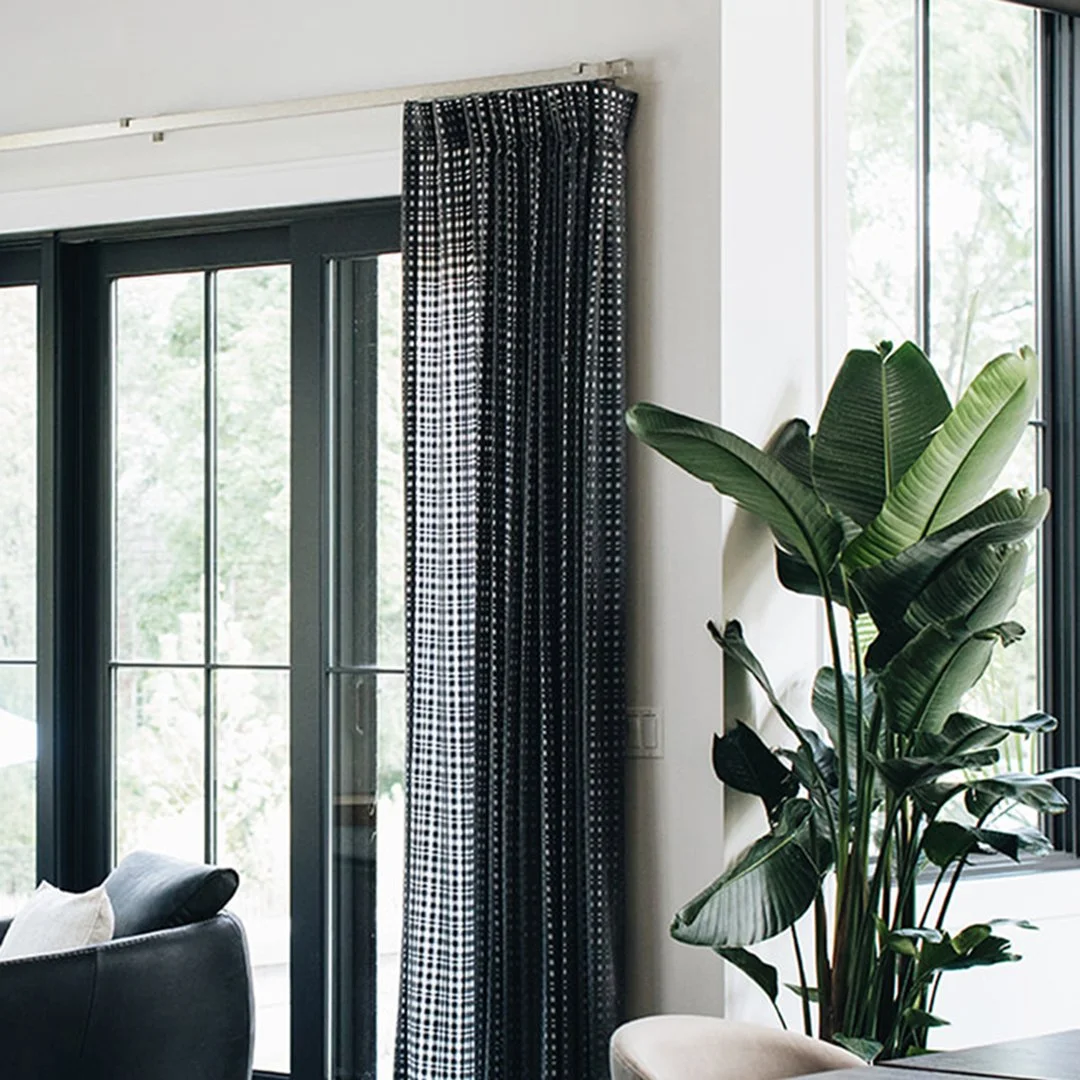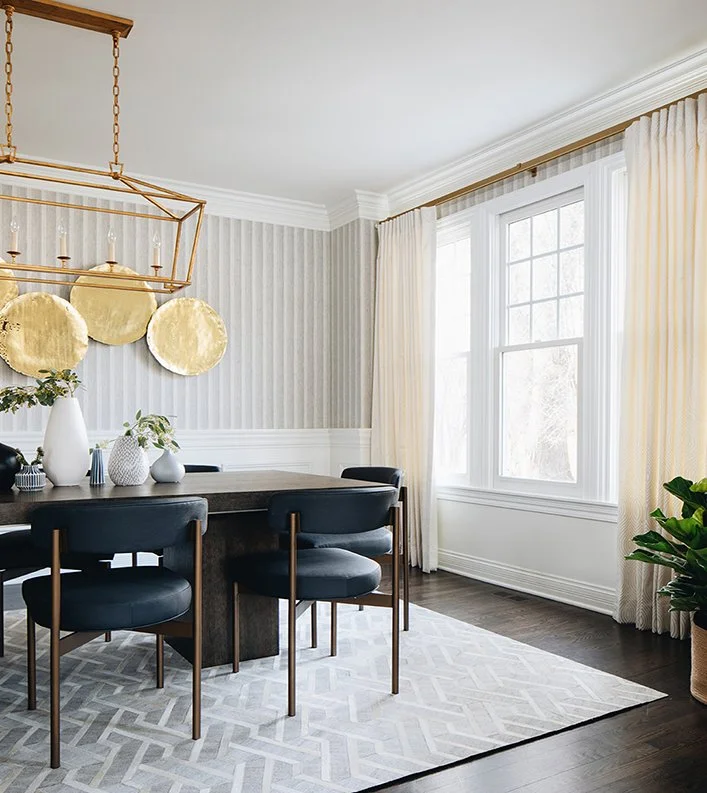In our experience, traverse rods and Ripplefold drapery are often a polarizing style choice for both designers and homeowners. Even within our office we have differing preferences about this style, but we also think that more than other styles of draperies, Ripplefold is unfairly written off as a result of too little information. To help shed some light on the versatility of this style, we’ve put together a quick guide to some of the most common concerns and scenarios for Ripplefold drapery and its accompanying hardware.
So first, what exactly IS a traverse rod and how does it work? Traverse rods (sometimes called simply “tracks”) have internal clips or eyes (known as carriers) encased inside of the rod. Accompanying drapery will either be made with snaps or hooks that connect directly to these internal carriers so no drapery rings are used with these systems. Most of the time, the drapery is controlled with either a baton on the leading edge or by a cord system but there are motorized options as well. Because the internal carriers tend to move much more easily than rings with a standard drapery rod, this type of hardware is extremely functional and a great choice used where drapery will be regularly opened and closed.
Despite the ease of operation, we still find that a lot of people are hesitant to work with this style and so today’s post is about tackling some of the most common concerns we get around traverse rods. Here are the top three reasons we hear from clients about why Ripplefold systems are not for them, and why we still might argue in its favor.
Issue: The hardware is visible above the drapery.
Solutions: If your space allows, opt to ceiling mount your hardware. This keeps the hardware above the eye line. Selecting hardware with a white finish and mounting it onto a white ceiling will further help in reducing the visibility, and the result is eye-catching drapery.
A ceiling-mounted simple white track paired with floor-to-ceiling drapery creates a stunning style and the track disappears.
Not all spaces allow for ceiling mounting though, and if that isn’t an option for you, there are still great solutions. Many suppliers offer traverse rods that are designed to look like a traditional rod (just without any rings). They are often metal rods that have a track installed inside the rod, although other materials such as wood is available.
If that still doesn’t suit, try pairing a traverse rod with pleated drapery instead of Ripplefold. The construction of pleated drapery that has hooks attached to the back allows for placement which will minimize the drop from the hardware, thus making it less visible when the drapes are closed. The track will be visible when the draperies are open.
Issue: The style is too modern.
Solutions: Ripplefold drapery is sleek and clean, which does often lend more toward a contemporary and modern style but for us, the fabric will dictate the design aesthetic more than anything else. Texture, color, and even trims will bring a completely different feeling to a drapery style.
Hardware with finials will give a classic style to a track
If that still just doesn’t fit with your style, consider pairing a traverse rod with pleated drapery. Pleated drapery can be incredibly versatile–formal, elegant, and traditional or transitional to sleek and modern, depending on the fabric and pleat style.
Issue: It’s too formal.
Solutions: Again, in this case, fabric choices will make all the difference.
Fabric textures and color will dictate the style of drapery.
There are also a number of situations where track systems may be the best (if not the only) functional drapery option. For example, in the situation with really large windows or sliding doors, or along curved windows or walls. Because of the way this type of hardware is mounted, there is no interference from support brackets when opening and closing the drapery.
Changed your mind a bit about this style of drapery? We are passionate about drapery of all types and love to share our expertise. Get in touch with your questions and project inquiries!
En nuestra experiencia, las barras de travesaño y las cortinas Ripplefold a menudo son una elección de estilo polarizante tanto para diseñadores como para propietarios de viviendas. Incluso dentro de nuestra oficina tenemos preferencias diferentes sobre este estilo, pero también creemos que, más que otros estilos de cortinas, Ripplefold se descarta injustamente como resultado de demasiada poca información. Para ayudar a arrojar algo de luz sobre la versatilidad de este estilo, hemos elaborado una guía rápida para algunas de las preocupaciones y escenarios más comunes para las cortinas Ripplefold y su herraje correspondiente.
Entonces, primero, ¿qué es exactamente una barra de travesaño y cómo funciona? Las barras de travesaño (a veces llamadas simplemente "rieles") tienen clips internos o ojales (conocidos como soportes) alojados dentro de la barra. Las cortinas correspondientes se fabricarán con broches o ganchos que se conectan directamente a estos soportes internos, por lo que no se utilizan anillos de cortina con estos sistemas. La mayoría de las veces, las cortinas se controlan con una batuta en el borde delantero o mediante un sistema de cordón, pero también hay opciones motorizadas. Debido a que los soportes internos tienden a moverse mucho más fácilmente que los anillos con una barra de cortina estándar, este tipo de herraje es extremadamente funcional y es una excelente opción utilizada donde las cortinas se abrirán y cerrarán regularmente.
A pesar de la facilidad de operación, todavía encontramos que muchas personas dudan en trabajar con este estilo y, por lo tanto, la publicación de hoy trata sobre abordar algunas de las preocupaciones más comunes que tenemos en torno a las barras de travesaño. Estas son las tres principales razones que escuchamos de los clientes sobre por qué los sistemas Ripplefold no son para ellos y por qué aún podríamos argumentar a su favor.
Problema: El herraje es visible por encima de la cortina.
Soluciones: Si su espacio lo permite, opte por montar el herraje en el techo. Esto mantiene el herraje por encima de la línea de visión. La selección de herrajes con acabado blanco y montaje en un techo blanco ayudará aún más a reducir la visibilidad, y el resultado son cortinas llamativas.
No todos los espacios permiten el montaje en el techo, y si eso no es una opción para ti, aún existen excelentes soluciones. Muchos proveedores ofrecen barras de travesaño diseñadas para parecer una barra tradicional (solo sin anillos). A menudo son barras de metal que tienen un riel instalado dentro de la barra, aunque también están disponibles otros materiales como la madera.
Si eso aún no te conviene, intenta combinar una barra de travesaño con cortinas plisadas en lugar de Ripplefold. La construcción de las cortinas plisadas que tienen ganchos adjuntos en la parte posterior permite una colocación que minimizará la caída del herraje, haciendo que sea menos visible cuando las cortinas están cerradas. El riel será visible cuando las cortinas estén abiertas.
Problema: El estilo es demasiado moderno.
Soluciones: Las cortinas Ripplefold son elegantes y limpias, lo que a menudo se presta más hacia un estilo contemporáneo y moderno, pero para nosotros, la tela dictará la estética del diseño más que cualquier otra cosa. La textura, el color e incluso los adornos aportarán una sensación completamente diferente a un estilo de cortina.
Si eso aún no se ajusta a tu estilo, considera emparejar una barra de travesaño con cortinas plisadas. Las cortinas plisadas pueden ser increíblemente versátiles: formales, elegantes y tradicionales o transicionales a elegantes y modernas, dependiendo de la tela y el estilo del pliegue.
Problema: Es demasiado formal.
Soluciones: Nuevamente, en este caso, las elecciones de tela marcarán toda la diferencia.
También hay una serie de situaciones en las que los sistemas de riel pueden ser la mejor (si no la única) opción funcional para cortinas. Por ejemplo, en la situación con ventanas o puertas corredizas realmente grandes, o a lo largo de ventanas o paredes curvas. Debido a la forma en que se monta este tipo de herraje, no hay interferencia de los soportes de soporte al abrir y cerrar las cortinas.
¿Cambiaste un poco de opinión sobre este estilo de cortina? Nos apasionan todo tipo de cortinas y nos encanta compartir nuestra experiencia. ¡Contáctanos con tus preguntas y consultas de proyectos!









